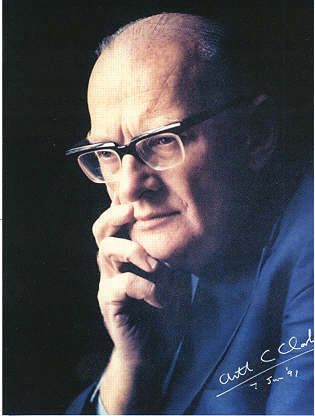Tribology past and future
Michael Dugger | TLT President's Report August 2011
What will 23rd Century tribologists say about our ‘quaint’ stage of development?

‘Any sufficiently advanced technology is indistinguishable from magic.’
—Arthur C. Clarke
Author, inventor & futurist
(Dec. 16, 1917 – March 19, 2008)
The recent celebration of Independence Day in the United States caused me to reflect on what life must have been like in the late 18th Century, particularly the tribological challenges that people faced during those times and the issues our descendants will face another 235 years from now.
Concerns with surfaces in relative motion are directly connected with the level of technological development in a society and, of course, not uniform across the globe. While the Industrial Revolution did not occur simultaneously everywhere, it is generally believed to have occurred between A.D. 1750- 1850. Therefore, the Industrial Revolution was getting started at roughly the time of the American Revolution (
1, 2).
Prior to the Industrial Revolution, the primary fuels were wood, charcoal, vegetable oils, coal and whale oil. Most work was done by manual labor or draft animals or through the use of water wheels and wind mills. Early machines used very simple plain bearings such as a shaft rotating in a hole and were made of wood from apple trees, for example.
Lubricants consisted of animal fats such as tallow and vegetable oils such as olive, linseed and castor oils. Tallow was found to be particularly resistant to washing off of surfaces during the popularization of steam locomotive and ship engines and was used as a lubricant until the 1950s.
Naturally occurring graphite was used as a solid lubricant, as was molybdenite (MoS2) which may have come into use through being mistaken for graphite. Wear-resistant surfaces consisted of natural stone and minerals and later iron.
Modern fuels from oil and gaseous hydrocarbons have much higher energy densities than pre-industrial fuels (47 MJ/kg for gasoline compared to 24 MJ/kg for coal and 16 MJ/kg for wood), which have permitted advances in transportation and power generation. Rolling element bearings exhibit dramatically reduced frictional losses compared to plain bearings over a wide range of operating speeds, combined with high load carrying capacity.
Today’s range of lubricants would be unimaginable to a pre-industrial tribologist and includes base oils and additives for a wide range of operating temperatures, alloys and applications, including space. Considering the level of sophistication in design, materials and operation of those 18th Century tribological contacts relative to current technology, one of science-fiction writer Arthur C. Clarke’s quotes comes to mind: “Any sufficiently advanced technology is indistinguishable from magic.” I suspect that a pre-industrial tribologist would consider many aspects of our technological world to be magic.
The advances associated with the Industrial Revolution would have been impossible without advances in fuels, lubricants, bearings and materials for tribological contacts. We also now realize that most of these advances came at the price of significant negative impact to the environment.
Where will tribology and lubrication engineering be after another 235 years?
Forecasts for the future are notoriously erroneous, but I conservatively speculate that tribology and lubrication engineering will be more important than ever. Future challenges will be related to improving and maintaining the standard of living for people everywhere in an environmentally sustainable way.
As president of a society that promotes education, certification and information sharing across a diverse network of professionals, I expect STLE will be an important part of meeting those challenges. Perhaps a future STLE president will comment about our “quaint” stage of development at the STLE tricentennial celebration in 2244!
1.
Duncan Dawson, “History of Tribology,” Longman Group Limited, New York, NY, 1979.
2.
The Industrial Revolution was under way before the American Revolution began, so no causal relationship is implied, only a temporal one.
 Mike Dugger is a Distinguished Member of the Technical Staff with Sandia National Laboratories in Albuquerque, N.M. You can reach him at mtdugge@sandia.gov
Mike Dugger is a Distinguished Member of the Technical Staff with Sandia National Laboratories in Albuquerque, N.M. You can reach him at mtdugge@sandia.gov.